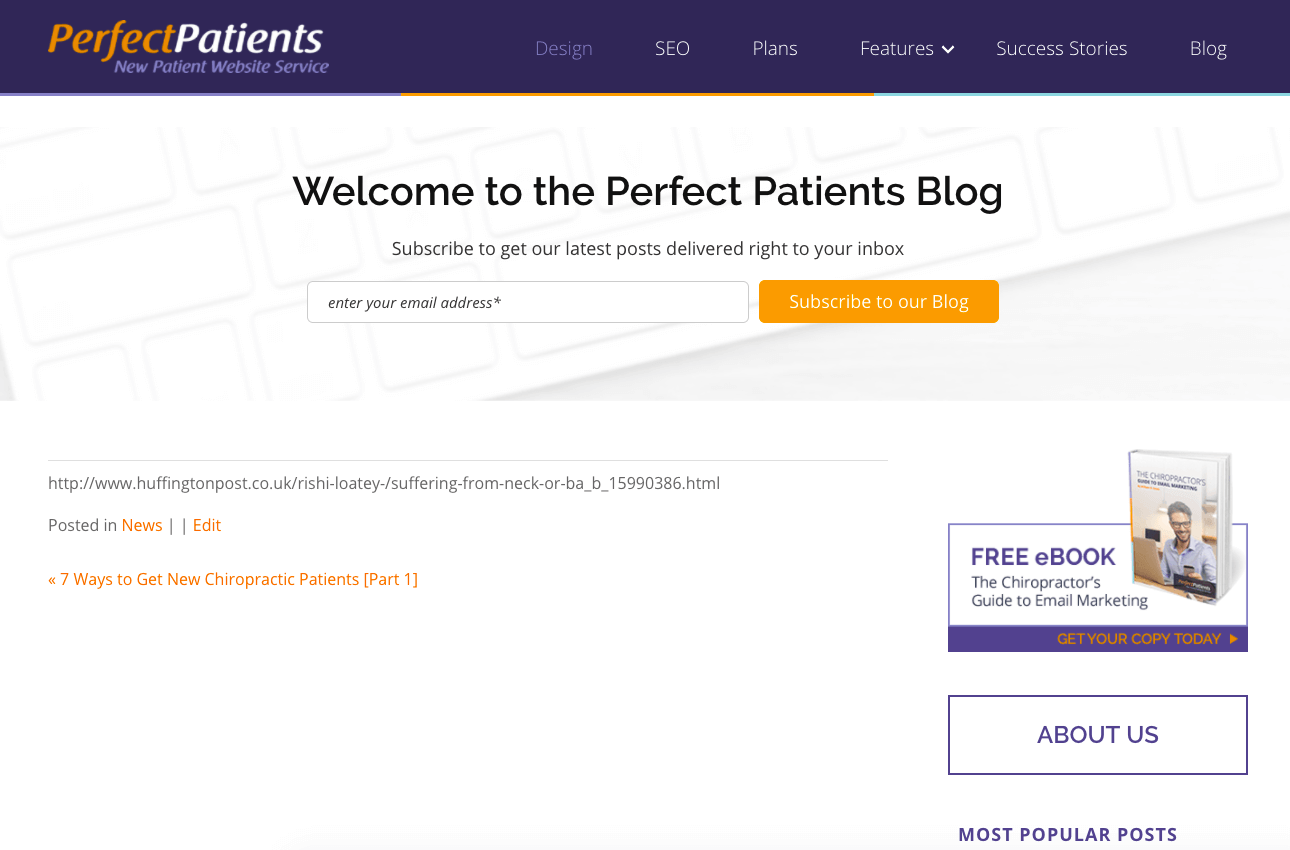Blogging is a great way to add fresh, new content to your website (something Google loves) while sharing your thoughts on topics that are relevant to your practice (something your patients love).
Here we will outline some do’s and don’ts when it comes to creating blog posts to help you get the most out of them.
Do:
Write blog posts on topics that are important to you.
Active in a local charity that provides wellness resources for underprivileged families? Write about it. A new study come out on the effects of technology on posture that has you fired up? Write about it. Blog posts like those show your current and prospective patients what you’re passionate about. It helps you attract like-minded patients, your “tribe.”
Write unique content.
If you want your blog posts to be of benefit to your website’s rankings, your content needs to be unique. If you’ve found an article from another source that you really want to share on your website, post your own, uniquely written summary of it explaining your perspective and then link to the original article.
Make your posts readable.
Internet users are known for skimming content. A long block of plain text is not easily skimmed and will lose the interest of your reader. So format your blog posts with an image, bullet points, and sub-headings. Break up long paragraphs into shorter ones. These few easy tweaks will help your readers stay engaged.
![]()
Don’t:
Don’t expect your blog to function like Facebook.
Sometimes you might want to simply share a link to an article from another source with your followers without drafting your own post to go along with it. In that case, share it on Facebook. Social media platforms are a great place to share links to another person’s content. On Facebook, sharing a link looks like this:

When you enter the link into your post, Facebook automatically pulls the title, image, and description of the article into your post. You don’t even need to add your own text and the post looks great.
But simply sharing a link to an article on your website’s blog, without adding your own content, doesn’t work the same way. That would look something like this:

You would have a post that simply shows the URL of the article you want to share. Nothing more. Without a title and some content, no one will have any reason to click on the link.
Don’t copy and paste from another source.
Again, this goes back to the importance of having unique content. If you simply copy and paste someone else’s content onto your blog, Google sees it as duplicate content (whether or not you include a link to the original). Do this enough and Google will penalize your site.
Don’t use copyrighted images.
While it’s very easy to find an image to go along with your post by doing a Google Image search, we advise against it. It’s best to assume that any image you find there is copyrighted. And using a copyrighted photo without the owner’s permission could result in the owner taking legal action. To avoid this, be sure to only use images that meet at least one of the following guidelines:


